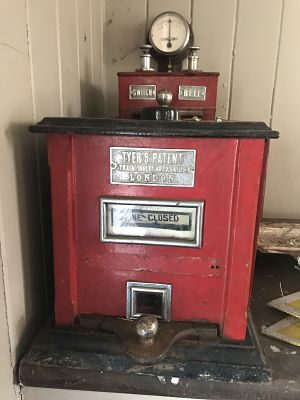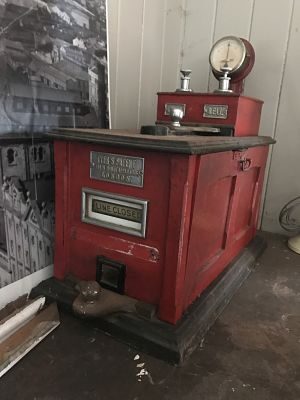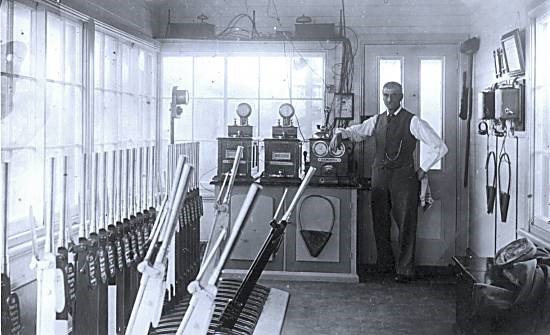Remuera Railway Station – Tyer Train Tablet Apparatus
The Remuera railway station has two pieces of Tyer Tablet apparatus, as did the old Newmarket railway station (now Parnell railway station).
Prompted by terrible train accidents in England, engineer Edward Tyer developed the tablet system in which a token is given to the train driver; this must be slotted into an electric interlocking device at the other end of the single-track section before another train is allowed to pass.[3] The system used a hard disk called a tablet, a form of token. The purpose of the system was to use the tablet as a physical guarantee to the train crew that their train had the exclusive right of way on the single line section. Without this, they could not proceed beyond the section signal which protected entry to the single line. With advances in electrical locking of the lever frame within the signal box, the tablet instrument also electrically locked the section signal lever. This was marked with a white stripe on the red background.
Edward Tyer (born 6 Feb 1830 Kennington, London; died 25 Dec 1912, Tunbridge Wells) was an English railway signal engineer and inventor of an electric train tablet system for the operation of single track railways. In 1851 Tyer was the manager of the Railways Electrical Signals Company in England and Winkworth & Cie in France. He established a business making electrical apparatus for railways, and the block instruments invented by him in 1855 were an important step forward. A simple code of electric bell rings (for up trains; for down trains, there was a distinctive gong) was used by one signalman to indicate to another in advance that a train was entering the section between them, and the latter signalman then operated a galvanometer telegraph instrument in the box of the former to indicate ‘train on line’, holding it so until the train arrived.
Even more important was the electric train tablet apparatus. During the 1870s, single line railways were operated either by ‘train staff and ticket’, which lacked flexibility since no train could enter one end of a section while the train staff was at the other or by telegraphed train orders, misuse of which led to two disastrous head-on collisions at Thorpe in 1874 where 25 people were killed and at Radstock in 1876 where 15 died. Prompted by the accidents, at the request of Currer, an official of the Caledonian Railway, Edward Tyer developed the tablet system in which a token is given to the train driver; this must be slotted into an electric interlocking device at the other end of the single-track section before another train is allowed to pass. Only one tablet at a time could be extracted for the instruments, serving as an authority for a train to enter a section from one end or the other.
Tyer was awarded a British patent in 1878 for the electric train tablet apparatus. The tablet system invented by him was widely adopted at home and abroad and he is said to have probably done more than any man of his time to secure the safety of railway passengers. It was used in New Zealand for close to 100 years until June 1994 on the Wellington to Masterton morning Wairarapa Connection.
You can read more about the Remuera Railway Station here.


